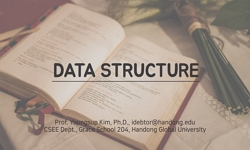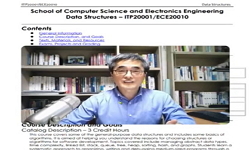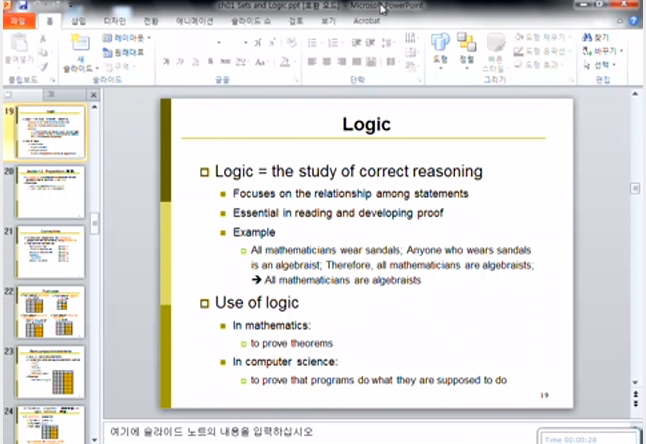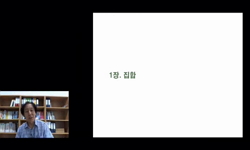Background and Objectives Benign paroxysmal positional vertigo (BPPV) is one of the mostcommon causes of dizziness with a high recurrence rate. This study aimed to analyze the recurrencerate and the risk factors for recurrence using the Korean Nationa...
http://chineseinput.net/에서 pinyin(병음)방식으로 중국어를 변환할 수 있습니다.
변환된 중국어를 복사하여 사용하시면 됩니다.
- 中文 을 입력하시려면 zhongwen을 입력하시고 space를누르시면됩니다.
- 北京 을 입력하시려면 beijing을 입력하시고 space를 누르시면 됩니다.

양성 돌발두위현훈의 재발 요인 분석: 11년간의 국민건강보험공단 표본 코호트 연구 = Analysis of Risk Factors for Recurrence of Benign Paroxysmal Positional Vertigo: An 11-Year Nationwide Population-Based Study
한글로보기https://www.riss.kr/link?id=A106023715
- 저자
- 발행기관
- 학술지명
- 권호사항
-
발행연도
2019
-
작성언어
Korean
- 주제어
-
등재정보
KCI등재
-
자료형태
학술저널
- 발행기관 URL
-
수록면
15-22(8쪽)
-
KCI 피인용횟수
0
- DOI식별코드
- 제공처
- 소장기관
-
0
상세조회 -
0
다운로드
부가정보
다국어 초록 (Multilingual Abstract)
Background and Objectives Benign paroxysmal positional vertigo (BPPV) is one of the mostcommon causes of dizziness with a high recurrence rate. This study aimed to analyze the recurrencerate and the risk factors for recurrence using the Korean National Health Insurance ServiceNational Sample Cohort (NHIS-NSC 2002-2013) data.
Subjects and Method Patients aged 20 years or older who were diagnosed with BPPV inthe period of 2002-2012 and had at least 1 year of monitoring period were included in this study.
The diagnosis of BPPV was made when the code for BPPV (KCD-6 code H811) was used orwhen canalith reposition therapy (EDI code MX035) was entered even in cases with differentdiagnoses. The risk factors of BPPV recurrence were analyzed.
Results Of the total of 21355 patients diagnosed with BPPV, 5876 patients (28%) demonstratedrecurrence. Multiple recurrences were common. When using the univariate regression analysis,age, sex, vestibular disease, headache, osteoporosis, and ischemic heart disease were foundsignificant. When the patients were classified into 4 groups according to age and sex, vestibulardiseases were found as a common risk factor for recurrence in all groups, while headache,osteoporosis, hypertension, and ischemic heart disease were significant in females.
Conclusion The recurrence rate of BPPV in the Korean adult population was approximately28% and recurrences were more common in patients aged over 65 and in females. Patients withvestibular diseases were at a higher risk of recurrence regardless of age or sex, while headache,osteoporosis, hypertension and ischemic heart disease increased the risk of recurrence in females.
참고문헌 (Reference)
1 Nunez RA, "Short-and long-term outcomes of canalith repositioning for benign paroxysmal positional vertigo" 122 (122): 647-652, 2000
2 Su P, "Risk factors for the recurrence of post-semicircular canal benign paroxysmal positional vertigo after canalith repositioning" 263 (263): 45-51, 2016
3 Tanimoto H, "Risk factors for recurrence of benign paroxysmal positional vertigo" 37 (37): 832-835, 2008
4 Jang YS, "Relationship between bone mineral density and clinical features in women with idiopathic benign paroxysmal positional vertigo" 30 (30): 95-100, 2009
5 Pérez P, "Recurrence of benign paroxysmal positional vertigo" 33 (33): 437-443, 2012
6 Yamanaka T, "Osteoporosis as a risk factor for the recurrence of benign paroxysmal positional vertigo" 123 (123): 2813-2816, 2013
7 Jeong SH, "Osteopenia and osteoporosis in idiopathic benign positional vertigo" 72 (72): 1069-1076, 2009
8 National Health Insurance Service, "National health insurance statistical yearbook" Health Insurance Review and Assessment Service and National Health Insurance Service 2014
9 Ishiyama A, "Migraine and benign positional vertigo" 109 (109): 377-380, 2000
10 Ogun OA, "Menopause and benign paroxysmal positional vertigo" 21 (21): 886-889, 2014
1 Nunez RA, "Short-and long-term outcomes of canalith repositioning for benign paroxysmal positional vertigo" 122 (122): 647-652, 2000
2 Su P, "Risk factors for the recurrence of post-semicircular canal benign paroxysmal positional vertigo after canalith repositioning" 263 (263): 45-51, 2016
3 Tanimoto H, "Risk factors for recurrence of benign paroxysmal positional vertigo" 37 (37): 832-835, 2008
4 Jang YS, "Relationship between bone mineral density and clinical features in women with idiopathic benign paroxysmal positional vertigo" 30 (30): 95-100, 2009
5 Pérez P, "Recurrence of benign paroxysmal positional vertigo" 33 (33): 437-443, 2012
6 Yamanaka T, "Osteoporosis as a risk factor for the recurrence of benign paroxysmal positional vertigo" 123 (123): 2813-2816, 2013
7 Jeong SH, "Osteopenia and osteoporosis in idiopathic benign positional vertigo" 72 (72): 1069-1076, 2009
8 National Health Insurance Service, "National health insurance statistical yearbook" Health Insurance Review and Assessment Service and National Health Insurance Service 2014
9 Ishiyama A, "Migraine and benign positional vertigo" 109 (109): 377-380, 2000
10 Ogun OA, "Menopause and benign paroxysmal positional vertigo" 21 (21): 886-889, 2014
11 Sakaida M, "Longterm outcome of benign paroxysmal positional vertigo" 60 (60): 1532-1534, 2003
12 Kansu L, "Long-term follow-up of patients with posterior canal benign paroxysmal positional vertigo" 130 (130): 1009-1012, 2010
13 Takemura T, "Localization of osteopontin in the otoconial organs of adult rats" 79 (79): 99-104, 1994
14 Ishiyama G, "Imbalance and vertigo : the aging human vestibular periphery" 29 (29): 491-499, 2009
15 Simhadri S, "Efficacy of particle repositioning maneuver in BPPV : a prospective study" 24 (24): 355-360, 2003
16 Picciotti PM, "Comorbidities and recurrence of benign paroxysmal positional vertigo : personal experience" 55 (55): 279-284, 2016
17 Kim JS, "Clinical practice. benign paroxysmal positional vertigo" 370 (370): 1138-1147, 2014
18 Bhattacharyya N, "Clinical practice guideline: benign paroxysmal positional vertigo" 139 (139): S47-S81, 2008
19 Choi SJ, "Clinical features of recurrent or persistent benign paroxysmal positional vertigo" 147 (147): 919-924, 2012
20 Vass Z, "Capsaicin stimulation of the cochlea and electric stimulation of the trigeminal ganglion mediate vascular permeability in cochlear and vertebro-basilar arteries : a potential cause of inner ear dysfunction in headache" 103 (103): 189-201, 2001
21 Brandt T, "Benign paroxysmal positioning vertigo : a long-term follow-up(6-17 years)of 125 patients" 126 (126): 160-163, 2006
22 Dornhoffer JL, "Benign paroxysmal positional vertigo and canalith repositioning : clinical correlations" 21 (21): 230-233, 2000
23 Yu S, "Association between osteoporosis and benign paroxysmal positional vertigo : a systematic review" 14 : 110-, 2014
24 Jang YS, "Age-related changes on the morphology of the otoconia" 116 (116): 996-1001, 2006
25 De Stefano A, "A multicenter observational study on the role of comorbidities in the recurrent episodes of benign paroxysmal positional vertigo" 41 (41): 31-36, 2014
26 Kim SH, "A cupulolith repositioning maneuver in the treatment of horizontal canal cupulolithiasis" 39 (39): 163-168, 2012
동일학술지(권/호) 다른 논문
-
액션카메라 개조를 통한 이비인후과 영역에서의 효율적인 수술 영상 촬영
- 대한이비인후과학회
- 배호영
- 2019
- KCI등재
-
안면거상 절개법과 V형 절개법을 이용한 이하선 절제술의 비교
- 대한이비인후과학회
- 곽지혜
- 2019
- KCI등재
-
- 대한이비인후과학회
- 정동원
- 2019
- KCI등재
-
- 대한이비인후과학회
- 송현욱
- 2019
- KCI등재
분석정보
인용정보 인용지수 설명보기
학술지 이력
| 연월일 | 이력구분 | 이력상세 | 등재구분 |
|---|---|---|---|
| 2024 | 평가예정 | 해외DB학술지평가 신청대상 (해외등재 학술지 평가) | |
| 2021-04-14 | 학술지명변경 | 한글명 : 대한이비인후과학회지 두경부외과학 -> 대한이비인후-두경부외과학회지외국어명 : Korean Journal of Otorhinolaryngology Head and Neck Surgery -> Korean Journal of Otorhinolaryngology-Head and Neck Surgery |  |
| 2021-01-01 | 평가 | 등재학술지 유지 (해외등재 학술지 평가) |  |
| 2020-01-01 | 평가 | 등재학술지 유지 (재인증) |  |
| 2017-01-01 | 평가 | 등재학술지 유지 (계속평가) |  |
| 2015-01-01 | 평가 | 등재학술지 유지 (등재유지) |  |
| 2011-01-01 | 평가 | 등재학술지 유지 (등재유지) |  |
| 2009-06-12 | 학술지명변경 | 외국어명 : Korean Journal of Otolaryngology-Head and Neck Surgery -> Korean Journal of Otorhinolaryngology Head and Neck Surgery |  |
| 2009-01-01 | 평가 | 등재학술지 유지 (등재유지) |  |
| 2007-06-14 | 학회명변경 | 영문명 : Korean Society Of Otolaryngology -> Korean Society of Otorhinolaryngology-Head and Neck Surgery |  |
| 2007-01-01 | 평가 | 등재학술지 유지 (등재유지) |  |
| 2006-01-16 | 학술지명변경 | 외국어명 : Korean Journal of Otolaryngology-Head &N -> Korean Journal of Otolaryngology-Head and Neck Surgery |  |
| 2005-01-01 | 평가 | 등재학술지 유지 (등재유지) |  |
| 2002-01-01 | 평가 | 등재학술지 선정 (등재후보2차) |  |
| 1999-07-01 | 평가 | 등재후보학술지 선정 (신규평가) |  |
학술지 인용정보
| 기준연도 | WOS-KCI 통합IF(2년) | KCIF(2년) | KCIF(3년) |
|---|---|---|---|
| 2016 | 0.12 | 0.12 | 0.13 |
| KCIF(4년) | KCIF(5년) | 중심성지수(3년) | 즉시성지수 |
| 0.12 | 0.13 | 0.306 | 0.02 |





 KCI
KCI






